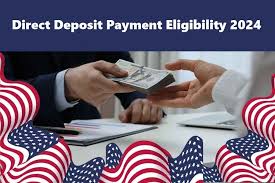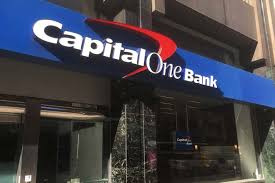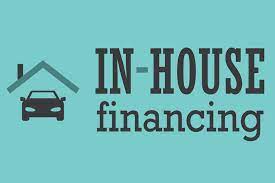Understanding direct deposit payment eligibility is crucial for both employees and freelancers who seek efficient and reliable methods to receive their payments. This form of payment not only ensures faster access to funds but also adds a layer of convenience and security to financial transactions. For many, it eliminates frequent trips to the bank, providing a seamless way to manage finances. However, the requirements and criteria for direct deposit payment eligibility can vary, making it important to verify these conditions beforehand. Whether you are an employer wanting to implement direct deposits or an individual looking to streamline personal finances, grasping the eligibility criteria can make all the difference. In this article, we will guide you through the nuances and ensure you understand all aspects of qualifying for this beneficial payment method.
- Eligibility criteria for direct deposit payments
- How can I verify my eligibility for direct deposit payments?
- Employees and freelancers are eligible for direct deposit payments.
- Understanding the eligibility criteria for direct deposit payments
Understanding Direct Deposit: An Overview of Payment Eligibility
Direct deposit has revolutionized the way we receive our earnings, offering both convenience and efficiency. However, it comes with specific criteria that one must meet to enjoy its benefits. Here, we’ll delve into the nitty-gritty of direct deposit payment eligibility requirements to help you understand if you qualify and how to streamline the process.
What is direct deposit?
Simply put, direct deposit is the electronic transfer of funds directly into a bank account. Instead of receiving a physical check, your earnings go straight into your bank account. People highly favor this method because it eliminates the risk of loss or theft associated with paper checks. Moreover, it ensures that funds are available almost immediately after payment.
Eligibility Criteria
One might wonder, “Do I qualify for direct deposit?” Let’s walk through the direct deposit payment eligibility criteria to clarify things a bit.
- Employment Status: Most employers offer direct deposits to their employees. Freelancers and independent contractors, on the other hand, should check with their clients or payment platforms to see if it is available for them.
- Bank Account: A valid bank account in your name is essential. This seems straightforward, yet many overlook the importance of having correct and updated bank details. Making a small error here can severely delay the process.
- Enrollment Forms: Complete the necessary enrollment forms. This often involves providing your bank’s routing number and your account number. Double-check these details, as a mistake can cause payments to bounce back or go into the wrong account. A bit of caution here goes a long way.
- Employer Policies: Your employer’s policies play a huge role. Some employers have specific enrollment periods or additional requirements. Always keep in touch with your HR department for the most accurate information and updates.
- Technological Compatibility: Ensure your bank supports direct deposits. This might sound odd in this digital age, but smaller or newer banks might have different policies or slight delays in processing electronic transactions.
How to Check Your Eligibility
Once you’re familiar with the direct deposit payment eligibility criteria, the next step is to confirm your standing. Here are a few tips on how to effectively check direct deposit payment eligibility:
- Consult your employer: Your HR department or payroll team can confirm if you are eligible. They can also provide the necessary forms and guide you through the process step-by-step.
- Visit your bank: Many banks offer resources and support for setting up direct deposits. They can confirm the correctness of your account’s setup for receiving electronic transfers.
- Review your contract: Some employment contracts explicitly mention payment methods, including direct deposit. Reviewing these documents can clarify any doubts.
Common Misconceptions
It’s not uncommon for there to be a bit of confusion around direct deposits. Many people think that simply having a bank account suffices, which is not entirely accurate. You must meet the specific enrollment steps and eligibility criteria. Moreover, there’s a widespread belief that all companies offer direct deposit, but this isn’t true for smaller businesses or certain types of freelance work. Thus, always double-check and stay informed.
In conclusion, while direct deposit offers a straightforward, faster way to receive your earnings, it requires a clear understanding of the direct deposit payment eligibility requirements. Stay engaged with your employer, keep your banking information updated, and regularly verify your eligibility to ensure a smooth payment process. After all, a little diligence can save a lot of hassle.
The Eligibility Criteria for Direct Deposit: What You Need to Know
Direct deposit is a modern marvel of convenience, yet understanding its eligibility criteria can be a knotty affair. The ease of having funds directly deposited into your account can save time and provide peace of mind. However, how do you know if you’re eligible for it?
How to Verify Direct Deposit Payment Eligibility
To determine if you qualify for direct deposit, the first step is often to consult the institution or employer providing the deposit. They typically have specific guidelines you need to follow. For employees, this process is usually straightforward: you fill out a form with your banking information. But don’t get too comfortable just yet, because it’s not always that simple.
Direct Deposit Payment Eligibility for Employees
Employees in most organizations can opt for direct deposit as an alternative to traditional paychecks. The requirements usually include having a state-issued ID, a valid social security number, and an active bank account. Yet, exceptions exist. Some companies may have additional prerequisites, such as a minimum employment duration or a specific job role.
| Requirement | Details |
|---|---|
| State-issued ID | Ensure that your identification is up-to-date. |
| Social Security Number | A valid SSN is required for verification. |
| Bank Account | You must have a current and active bank account. |
For employees, fulfilling the initial eligibility criteria is just the beginning. There may also be a waiting period before the direct deposit begins. This can be anywhere from one pay cycle to several months, depending on company policies.
Direct Deposit Payment Eligibility for Freelancers
Direct deposit payment eligibility for freelancers can be a bit more convoluted. Each client may have their own requirements. Most freelancers need to provide an invoicing system or a written agreement that stipulates the terms of direct deposit. Additionally, some clients might only consent to a direct deposit once they have established a certain level of trust.
Here’s where things get tricky: unlike employees, freelancers might have multiple clients, each with different expectations. Hence, keeping detailed records and ensuring mutual understanding are crucial. Many freelancers prefer using online payment systems that support direct deposits seamlessly. These platforms act as intermediaries, ensuring that all parties adhere to the stipulated terms.
In summary, verifying your direct deposit payment eligibility requires communication, documentation, and sometimes patience. Whether you’re an employee looking to streamline your payday or a freelancer juggling various clients, understanding these criteria can make the process much smoother. So, get your paperwork ready, ask the pertinent questions, and before long, you’ll be well on your way to enjoying the convenience of direct deposits.
How to Qualify for Direct Deposit Payments in Your Bank Account
Setting up your bank account for direct deposit payments can greatly simplify your financial life. However, understanding exactly what you need to qualify for can sometimes be a bit tricky. Let’s break it down so you can get one step closer to seamless banking.
Understanding Direct Deposit Payment Eligibility
First and foremost, it’s important to grasp the basics of understanding direct deposit payment eligibility. This means understanding the requirements set by both your bank and the entity disbursing the funds, which may be an employer, a government agency, or another source. Every institution has its criteria, so you’ll need to pay close attention to those specifics.
The most common requirement is having a valid bank account in excellent standing. Most banks will require an account that has been active for a certain period, typically around 90 days. The exact timeframe can vary, so check with your bank.
Setting up a Direct Deposit
Once you’ve determined that your account meets the basic requirements, you’ll need to provide some information to set up the direct deposit. These details usually include your bank routing number and your account number. Your employer or other paying entity will use this information to deposit the funds directly into your account.
Make sure to double-check these numbers for accuracy. We don’t need the hassle of misdirected funds or setup delays caused by incorrect information. Some entities might also require you to provide a voided check to verify your account details.
Common Pitfalls
Qualifying for direct deposit payments should be straightforward, yet there are some common pitfalls. One such issue is the failure to keep your account in good standing. Banks might deny direct deposit capabilities if your account has frequent overdrafts or shows signs of fraudulent activity. This is where understanding direct deposit payment eligibility becomes crucial. Keeping your account in excellent standing not only ensures smooth direct deposit transactions but also saves you from unnecessary fees or account suspensions.
Additionally, some smaller financial institutions or online-only banks might not offer direct deposit services. This means you may need to open an account with a larger, more traditional bank if you’re having issues setting up direct deposit. Always check with your bank to see if they offer this service and whether there are any hidden requirements.
Benefits of Direct Deposit
When you qualify for direct deposit, it brings several benefits. Most notably, you receive your funds faster compared to traditional check deposits. Additionally, the convenience of not having to physically deposit checks is added—the funds are directly deposited into your account, ready for immediate use. Not to mention, it reduces the risk of losing a check or having it stolen.
Ultimately, the key to smooth direct deposit transactions lies in ensuring that your bank account meets the eligibility criteria and that all provided information is accurate. By understanding these steps, you can enjoy the benefits of direct deposit without unnecessary complications. So why wait? Set up your direct deposit payment now to simplify your financial management.
Eligibility for Direct Deposit Payments: Common Requirements
Direct deposit payments offer a convenient and secure way to receive funds directly into your bank account. To be eligible for this form of payment, there are several common requirements that you must meet. While these criteria can vary depending on the employer or financial institution, most organizations follow a similar set of guidelines. Below, we’ll explore these requirements in detail.
1. Bank Account
First and foremost, you must have an active bank account. This can be either a checking or savings account. The critical point here is that the account should be capable of receiving electronic funds. Without such an account, direct deposit isn’t an option. Additionally, some banks may require you to maintain a minimum balance to avoid fees, but this isn’t always the case.
2. Routing and account numbers
To facilitate the direct deposit, you will need to provide your employer or financial institution with your bank’s routing number and your personal account number. You can typically find these numbers at the bottom of a check or in your bank’s online portal. Payment delays or misdirected payments result from incorrect numbers. Therefore, double-checking these numbers is crucial.
3. Direct Deposit Authorization Form
Completing a Direct Deposit Authorization Form is another essential step. This form confirms your consent for your employer to electronically transfer your funds. It will ask for your bank details, including the account type, routing number, and account number. Some companies might also require additional identification, like a copy of your ID or a blank, voided check.
4. A consistent source of income
Employers often prefer employees who have a consistent income source. This means that you should have a stable job or a regular inflow of funds. Inconsistent deposits may pose challenges in setting up a direct deposit system. For freelancers or gig workers, getting approval might involve additional verifications.
5. Banking Agreement
It’s also necessary to agree to your bank’s terms and conditions for electronic transfers. Some banks have specific regulations and fees associated with direct deposits. Reviewing these terms will help you understand any potential costs or limitations involved in using direct deposit services.
6. Social Security Number (SSN) or Tax Identification Number (TIN)
Your employer might also require your Social Security Number (SSN) or Tax Identification Number (TIN) for verification purposes. These identifiers guarantee that your payments reflect the correct tax liabilities. Providing accurate information is crucial to avoid any legal or tax-related issues.
| Requirement | Necessary Details |
|---|---|
| Bank Account | Checking or saving |
| Routing and account numbers | The item was found on a check or online portal. |
| Authorization Form | Employer’s consent form |
| Consistent Income Source | Stable job or regular inflow |
| Banking Agreement | Agree to terms and conditions |
| SSN or TIN | For tax verification |
Conclusion
Direct deposit is a highly efficient way to manage your finances, but it comes with its own set of requirements. These steps, which include having an active bank account and submitting an authorization form, guarantee the secure and accurate transfer of your payments. Understanding these requirements not only streamlines the setup process but also helps in avoiding potential pitfalls. While it may seem a bit overwhelming at first, once you have all the necessary details, the process becomes straightforward.
Employees’ Benefits and Eligibility for Direct Deposit
Direct deposit stands as a frequently chosen method for salary distribution in modern businesses. It’s a convenient, safe, and efficient way of ensuring that employees receive their paychecks without any hitches. The perks of direct deposit are numerous for both employees and employers, promoting a seamless financial experience while allowing companies to streamline their payroll processes.
Efficiency and convenience
One of the standout advantages of direct deposit is the efficiency it brings. Employees no longer need to visit the bank, wait in long lines, or deal with misplaced or stolen checks. The money appears in their account on payday without any delay, which allows for better financial planning. This efficiency isn’t just a boon for employees; it also helps employers avoid the administrative hurdle of distributing physical checks.
Security and peace of mind
Security is another pivotal benefit of direct deposit. Losing or stealing physical checks can cause unnecessary delays and frustrations. Direct deposit reduces the risk of theft or fraud by transferring funds electronically. Furthermore, it’s not just about the transfer’s security; it’s also about everyone’s ongoing peace of mind. Knowing your check is safely deposited when expected is a relief, especially in today’s fast-paced world.
Cost-Effectiveness
On the employer side, direct deposit is more cost-effective. Printing checks, manual distribution, and the occasional need for check re-issuance can be quite expensive and time-consuming. Direct deposit, on the other hand, eliminates those costs and inefficiencies. Administrative tasks become less burdensome, and companies can direct their focus and resources to more critical business areas.
Employee Eligibility
But who exactly is eligible for direct deposit? Generally, eligibility criteria are minimal. Most employers offer direct deposit to all employees, provided they have a valid checking or savings account. Some companies might also require a recent pay stub or a voided check to set up the process initially. It’s worth noting that eligibility specifics can vary between employers, so employees should always check with their HR department to understand the precise requirements in their case.
Common Misunderstandings
However, there are a few common misunderstandings concerning direct deposit. Some worry about hidden fees. However, employers typically bear any associated fees, leaving no additional costs for employees. Others may be concerned about privacy and whether employers can access account information. Rest assured, employers only need the basic information to set up the deposit and do not have access to any other private information.
Direct deposit may seem like a straightforward perk, but getting the facts straight can be somewhat confusing given the different organizational policies and individual concerns. It’s a reliable, cost-effective method that benefits everyone involved when adequately understood and implemented.
In summary, the benefits of direct deposit are clear, providing a secure, efficient, and cost-effective method for salary distribution. With minimal eligibility criteria, most employees can take advantage of this modern payment system, enjoying the peace of mind that comes with knowing their pay is safely deposited into their bank account on time.

Direct Deposit Payment Eligibility: A Detailed Guide
In today’s fast-paced world, understanding the intricacies of direct deposit payments can be incredibly beneficial. This guide aims to demystify the eligibility requirements for utilizing this convenient payment method. It’s crucial to grasp the nuances, especially if you wish to streamline your financial transactions effectively.
Who Qualifies for Direct Deposit?
Employment is the primary requirement for qualifying for direct deposit. Most employers offer this payment method to their employees. However, it’s not just limited to salaries. Your bank account can receive direct deposits of certain government benefits, pension payments, and even some insurance settlements. Intriguingly, the specific eligibility for these categories can vary depending on organizational or governmental policies.
Bank account requirements
To receive direct deposits, you must have an active bank account. Banks usually require some verification before activating direct deposit services. Make sure your account details, such as routing numbers and account numbers, are accurate. Small discrepancies can lead to payment delays or rejections. Additionally, some banks offer incentives for setting up direct deposits, which can be worth exploring.
Setting up a Direct Deposit
“Starting is the secret to getting ahead.” – Mark Twain Mark Twain
Start by contacting your payroll department or the organization that handles the payment. They will provide you with a direct deposit form, asking for your bank information. Double-check all the details to ensure accuracy. It’s a relatively straightforward process, surprisingly so considering the benefits it brings. Efficiency and reliability are key motivations driving individuals toward direct deposit payments.
Common Hurdles and Solutions
Although direct deposit is generally straightforward, some complexities may arise. For instance, outdated bank information can halt the process. Keeping your records updated is essential. Another challenge could be systemic discrepancies between the payer and your bank. Regular communication with both parties can mitigate such issues. It’s a balancing act, maintaining accuracy while ensuring the smooth running of your finances.
| Requirement | Details |
|---|---|
| Employment | Most employers offer direct deposit for salaries. |
| Bank Account | An active bank account is essential. |
| Direct Deposit Form | Provided by your payroll department. |
Final Thoughts
Embracing direct deposit payments can significantly enhance the convenience and reliability of receiving funds. While it can initially appear complex, understanding the essentials makes the transition smoother. The benefits far outweigh the challenges, and once set up, it operates seamlessly.
Steps for determining your eligibility for a direct deposit
Setting up a direct deposit for your income can be a straightforward process, but ensuring your eligibility first is vital. This guide will walk you through a few essential steps to help determine if direct deposit is the right choice for you. I promise we’ll keep things clear, but forgive me if some parts seem a bit perplexing.
Step-by-Step Guide
- Check with Your Employer: The initial step is to confirm with your employer if they offer direct deposit as a payment method. Not all companies offer it, though it’s increasingly common. Simply ask your HR department or payroll representative.
- Ensure You Have a Bank Account: For direct deposit, you will need a bank account. If you don’t have one yet, now’s the time to open an account. Look for banks or credit unions that offer free or low-cost checking accounts.
- Personal Information Ready: Gather your personal information, including your bank account number and the bank’s routing number. These are essential for setting up direct deposits. You can typically find this information on your checks or bank statements.
- Fill out a Direct Deposit Form: Your employer or financial institution typically provides this form. It requires your bank account details and other personal information.
- Submit the Form: Once completed, submit the form to your employer’s payroll department. There might be a processing period, so be sure to ask about the timeline.
- Verify the Deposit: After the initial direct deposit, confirm its arrival in your bank account. If there are issues, contact your payroll department immediately.
Although these steps may appear simple, the details are crucial. For instance, ensuring that your bank account’s routing number aligns precisely with the one on file with your employer is crucial. A misalignment can delay your first direct deposit. This brings us to another overlooked aspect: timing.
Important Considerations
- Payment Cycles: Familiarize yourself with your company’s payment cycles. Some companies process payroll weekly; others do so biweekly or monthly. Knowing this can help you anticipate when to expect your first direct deposit.
- Bank Policies: Different banks have varying policies for processing direct deposits. Some banks post deposits immediately upon receipt, while others may hold funds for verification.
- Security Measures: Always be cautious with your bank information. Ensure you’re submitting forms through secure channels to prevent unauthorized access to your details.
Direct deposit offers numerous benefits, making transactions more seamless and reducing the hassle of manual endorsements. Make sure you submit and verify all your information accurately. The precision in these details often delineates a smooth transition from one paycheck to another.
Finally, it’s worth clarifying that, while these steps should standardize the process, different employers or financial institutions may require additional steps. Always double-check with your employer or bank to avoid unnecessary delays.
Frequently Asked Questions: Eligibility for Direct Deposit Payments
Direct deposit payments have become a popular and convenient way to receive funds directly into your bank account. However, understanding the eligibility criteria can sometimes be confusing. Here, we address some frequently asked questions to help clarify who can benefit from this service.
What makes me eligible for direct deposit payments?
To qualify for direct deposit payments, you typically need to have a valid bank account, as payments are generally made electronically. Additionally, you might need to provide specific information, like your bank’s routing number and account number, to guarantee the correct allocation of funds. Certain employers or service providers might have additional requirements, so it’s always beneficial to check with them directly.
Are there any specific types of bank accounts that are required?
Normally, both savings and checking accounts can receive direct deposit payments. However, some payment providers might prefer a checking account due to its versatile nature. It’s essential to verify this aspect with your specific provider to avoid any reallocations or delays in the payment process.
If I change employers frequently, can I receive direct deposit payments?
Yes, you can receive direct deposit payments regardless of how often you change employers. Each time you start with a new employer, you will need to provide your bank account details to ensure the continuity of direct deposits. This process may involve filling out a form or providing your account information online.
What if I don’t have a bank account?
Not having a bank account can complicate things. However, some payment providers offer alternatives like prepaid debit cards or other electronic payment methods. These alternatives might have separate eligibility criteria, so it’s best to check with the payment provider for more details.
How long does it take for a direct deposit to start?
Once you’ve submitted your bank account details, it can take one or two pay cycles for the direct deposit to begin. This waiting period allows the employer or provider to verify your information and set up the direct deposit correctly. During this period, you might receive a paper check as a temporary measure.
What information do I need to provide for a direct deposit?
To set up direct deposit, you will generally need the following information:
| Information | Details |
|---|---|
| Bank Name | Your bank’s official name |
| Bank Routing Number | Typically, a 9-digit number |
| Account Number | Your personal account number |
Providing accurate and complete information is essential to ensure there are no hitches in setting up your direct deposit. Any discrepancy can cause delays in the process and potentially lead to misdirected funds.
Understanding your eligibility for direct deposit payments can save you time and ensure efficient management of your funds. Whether it’s through a traditional bank account or another electronic method, the key is to stay informed and provide accurate information.
Direct Deposit vs. Other Payment Methods: Eligibility Comparison
When considering payment methods for your salary or other financial transactions, it’s essential to weigh the options available. The most prominent choices typically include direct deposit, checks, and cash payments. Each method has its own set of advantages and requirements, which can sometimes create a bit of confusion.
Direct Deposit
Direct deposit has become highly popular in recent years. Its primary advantage is convenience. Get a check without waiting for it to arrive and take it to the bank. Direct deposit transfers funds directly into your bank account, thereby saving time. To be eligible for direct deposit, you generally need a bank account. This might seem limiting to those without bank access, but in reality, many financial institutions offer affordable solutions or second-chance accounts to those who have had banking issues in the past. Additionally, employers usually require some form of authorization and account verification. Therefore, while direct deposit is accessible, it’s not entirely hassle-free.
Checks
On the other hand, checks provide a tangible method of payment. You receive a document to hold, which some people find reassuring. However, checks can be inconvenient. If you lose one, you might face delays and complications in getting it reissued. Checks also require a trip to the bank, which is not ideal if you have a busy schedule. Receiving checks is straightforward if you are eligible. You don’t need a bank account to receive a check; you can often cash it at various locations, albeit potentially with a fee. Hence, checks offer flexibility but demand more effort on your part.
Cash Payments
Then there’s the classic cash payment. Cash is simple, immediate, and universally accepted. However, it’s not without its flaws. Carrying large amounts of cash can be risky. Also, cash transactions lack the built-in tracking that electronic payments provide, making budgeting slightly more challenging. Eligibility for cash payments is pretty much universal; anyone can accept cash without a bank account or verification process. Despite this ease, the practical downsides, like safety and tracking, often outweigh the benefits.
In conclusion, when comparing direct deposit to checks and cash, eligibility plays a crucial role. Direct deposit requires banking facilities but offers unmatched convenience. Checks offer flexibility, but they require more effort from you. Although widely accepted, handling cash can be risky. Your choice depends on your circumstances and priorities. Do you value convenience, flexibility, or simplicity? Understanding these aspects will guide you to the most suitable payment method.
Optimizing Your Finances: Ensuring You Meet Direct Deposit Requirements
Direct deposit has become the gold standard for receiving payments. It offers convenience, speed, and reliability. Meeting direct deposit requirements can seem daunting, but with a little organization and planning, you can maximize your financial efficiency. Let’s dive into the steps you need to take to ensure you meet all direct deposit requirements and optimize your finances.
Understanding Direct Deposit
Direct deposit is an electronic method of transferring funds directly to your bank account. It eliminates the need for physical checks and reduces the risk of lost or stolen payments. Banks and financial institutions use an Automated Clearing House (ACH) network to facilitate these transactions swiftly and securely.
Common Direct Deposit Requirements
Employers and financial institutions typically have specific requirements for setting up direct deposits. Understanding this can help you avoid any hiccups. Here are some of the most common requirements:
- Bank Account Information: Ensure you have accurate details about your bank account, including the account number and routing number.
- Employer Forms: Employers frequently require that you fill out a direct deposit authorization form.
- Identification Verification: Be prepared to provide identification documents to confirm your identity.
- Minimum Balance Requirements: To activate direct deposit services, some banks require a minimum balance.
Steps to Optimize Your Finances
Optimizing your finances with direct deposit involves more than just meeting the basic requirements. Here are some strategies you can employ:
- Set Up Multiple Accounts: Consider directing a portion of your paycheck into a savings account to build an emergency fund. This automatic transfer can help you save consistently without additional effort.
- Track Your Spending: Utilize banking apps to monitor your expenses and identify patterns. Understanding your spending habits allows you to make informed financial decisions.
- Avoid Overdraft Fees: Ensure you have sufficient funds in your account to cover automatic withdrawals. Overdraft fees can quickly add up and derail your financial plans.
Overcoming Challenges
While direct deposit is generally straightforward, you might encounter some challenges along the way. Here are some common issues and how to address them:
If your direct deposit is delayed or missing, first check with your employer to ensure the payment was processed correctly. Next, verify your bank account information for any discrepancies. If problems persist, contact your bank to escalate the issue.
Conclusion
Ensuring you meet direct deposit requirements can greatly improve your financial situation. It offers numerous benefits, such as time-saving automation and increased security. By understanding and fulfilling the necessary steps, you can make the most of this efficient payment method and keep your finances on track. Remember, a little preparation goes a long way toward optimizing your financial health.
Optimizing your finances isn’t just about meeting direct deposit requirements; it’s about creating a system that works for you. Stay organized, stay informed, and, most importantly, stay proactive.
Conclusion
In conclusion, understanding direct deposit payment eligibility can make a significant difference in how you manage your finances. It’s worth taking the time to check if you qualify and what steps you need to take. This way, you can enjoy quicker access to your funds without the hassle of paper checks. Ultimately, understanding this topic enables you to make decisions that optimally align with your financial circumstances. So, take a moment to look into your options and see how direct deposit can benefit you.
Frequently Asked Questions
What is a direct deposit?
A direct deposit is an electronic transfer of funds directly into a bank account rather than through a physical check.
How do I set up direct deposit?
To set up direct deposit, you typically need to provide your employer or the paying entity with your bank account number and routing number.
Is a direct deposit safe?
Yes, direct deposit is safe because it uses secure banking systems and lowers the risk of lost or stolen checks.
When will my direct deposit be available in my account?
Typically, your account receives direct deposit funds on the same day of deposit. The exact time can vary depending on the bank.
Can I use direct deposit for multiple accounts?
Yes, you can set up direct deposits for multiple accounts, such as splitting your paycheck between a checking and savings account.
What do I need to do if my banking information changes?
If your banking information changes, you need to notify your employer or the paying entity as soon as possible to update your direct deposit details.
Can I set up direct deposit if I don’t have a bank account?
No, you need a bank account or a similar financial account, such as a prepaid card account, to receive funds through direct deposit.
Are there any fees associated with direct deposit?
Most banks do not charge fees for receiving direct deposits. However, you should check with your specific bank to confirm this.
What kinds of payments are possible with direct deposit?
You can use direct deposit for a variety of payments, such as salaries, tax refunds, government benefits, and pensions.
How can I verify the processing of my direct deposit?
To see the deposit, check your bank account balance or bank statement. Employers or paying entities may also provide a notification or pay stub.


















